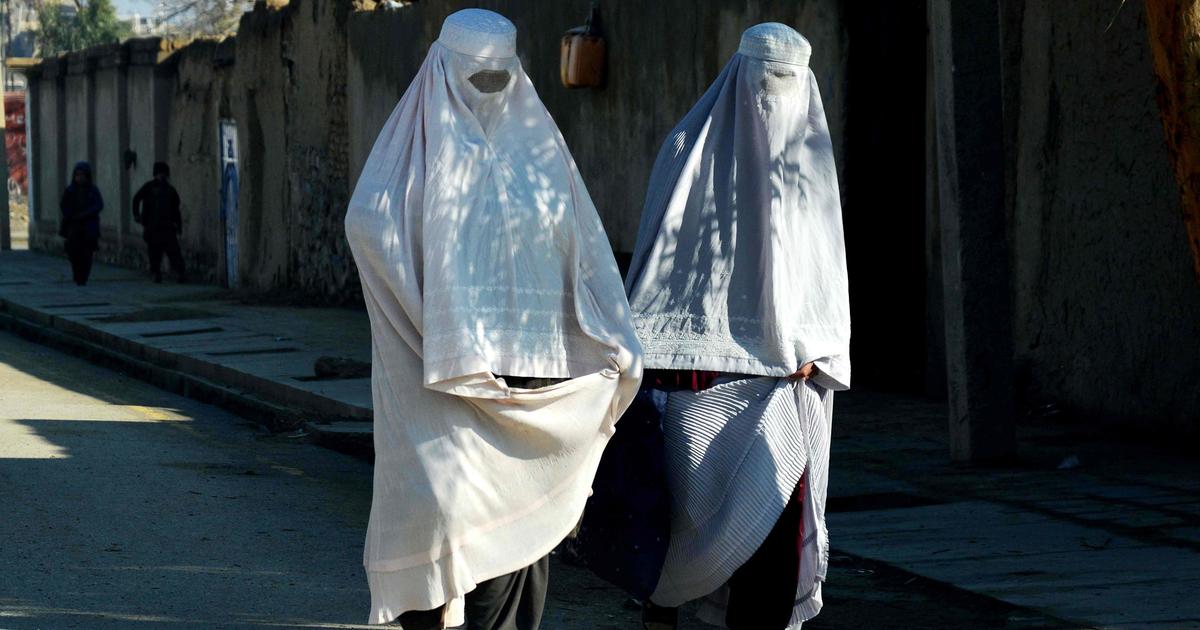Separate men and women at universities in Afghanistan 0:50
(CNN) -
A flimsy gray curtain divides a university classroom in Kabul, Afghanistan, in two: male students sit on one side and hijab-clad women on the other.
It's a glimpse of what education could look like in Afghanistan under Taliban rule, as some students returned to classrooms for the start of the new academic semester this week.
The last time the Taliban were in power - from 1996 to 2001 - women and girls were banned from education and work.
After they were removed from office in 2001, the women were free to go to university and to work.
Now the Taliban are back.
While his current leadership has insisted that women play a prominent role in society and that his regime be "inclusive", doubts remain as to whether this rhetoric will match reality.
Photos shared on social media of the first college classrooms that opened after the US withdrawal include women, but with notable differences.
advertising
As Afghan protests demanding inclusion continue, the Taliban tweets video of women apparently marching in favor of their government
Students divided by a curtain at the University of Avicenna on September 6. (Credit: Social media handout / via REUTERS).
The Taliban-led Ministry of Education approved a proposal, put forward by the Afghanistan University Union, which represents 131 universities, on separating male and female students.
According to the proposal, female and male students must enter their place of learning through separate entrances.
Mixed classes are only allowed when the number of female students is less than 15 and the classroom must be divided by a curtain.
Newly created classes at private universities should be separated for men and women, the proposal adds.
And all universities are required to designate a separate area for female students to perform their prayers.
In addition, "all students, teachers and employees are required to wear the hijab in accordance with Sharia law," the proposal said.
The hijab covers the hair, but not the face.
What is the sharia law under which the Taliban rule Afghanistan?
Sharia law and its strict application in Afghanistan 2:16
"In the future, universities should try to hire female teachers for female students. In the meantime, efforts should be made to appoint older female teachers who are recognized as trustworthy to teach female students," the proposal continues.
In addition to classroom divisions, universities must designate a separate prayer area for women. (Credit: Aamir QURESHI / AFP)
A professor lectures students at a university in Kabul, Afghanistan, on September 7, 2021. (AAMIR QURESHI / AFP via Getty Images)
Waheed Roshan, vice chancellor of the private Bakhtar University in Kabul, said the institution would comply with the proposal, but added that for many universities the logistics would be a challenge.
He told CNN that Bakhtar, where about 20% of the 2,000 students are female, could teach classes for men and women in separate shifts.
But other universities may have a difficult time placing partitions inside their classrooms, Roshan said.
"It is better to stay home"
There was a mixed response from the students to the educational changes.
Sahar, 21, who is studying political science, told CNN she was happy that the Taliban had not banned girls from attending higher education, but described the new rules as extreme.
"There are so many students in Kabul who grew up in a free environment where they had the opportunity to choose what to wear and which university to attend or whether to sit in a classroom with men or not, but now it would be too difficult for them to adapt to these extreme rules," he said .
Burka, Niqab, Chador, Hijab: How to Distinguish the Different Veils Muslim Women Wear
Sahar said that even before the Taliban took power, the girls wore modest clothing and that he did not see the need for further restrictions.
She also said that she would try to resume her studies under the new rules, but was not sure she could continue for long.
Ziba, another student in her 20s in Kabul, said she planned to give up hopes of graduating from university due to the security situation and because the Taliban might impose stricter conditions in the future.
Said it was better to stay home.
Ziba asked CNN not to use her real name.
But 19-year-old Mina Qasem, who graduated from high school last year, said she was excited to start college.
"I will wear whatever type of hijab they ask me as long as they keep universities open for women. I am very excited to begin my next chapter in life and my sister, who is finishing high school this year, will. Please apply for one as well. from private universities at the end of the year. "
Mina said that if women wanted to have a voice in the future, they had to educate themselves in any circumstance.
- A CNN contributor outside of Afghanistan has not been named for security reasons. CNN's Sheena McKenzie contributed to this report.
Afghanistan Taliban







/cloudfront-eu-central-1.images.arcpublishing.com/prisa/KA3LQ5ZEAFEQXOIZXJEEVDUZUQ.jpg)

